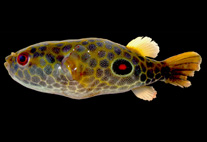Abstract
The aim of this study was to analyze the taxonomy and distribution of the polychaetes of the family Paraonidae from a lagoon-estuarine ecosystem in the Gulf of Mexico. The samples come from 20 soft bottom stations in the Términos La-goon during the dry and rainy seasons, of which eight included paraonids. In all, 1183 specimens belonging to two new species were identified: Aricidea (Acmira) hirsuta (1125 specimens) and Paradoneis carmelitensis (58 specimens). A. (A.) hirsuta is clearly distinguished from other members of the genus by the presence of unidentate curved spines with a dense pubescence along their medium and distal margins, and because the median antenna is short. P. carmelitensis is mainly characterized by the absence of eyes, by the presence of triangular shaped postchaetal prebranchial lobes, and the presence of branchiae and lyriform chaetae from chaetiger 4. The paraonids occurrence was mainly associated with salinities close to marine conditions (31.71 to 35.85 psu). They were almost totally collected during the rainy season (1178 specimens from both species) in the central and southern areas; during the dry season only five specimens of P. carmelitensis were recorded.

